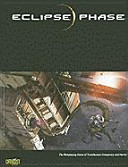Language Requires a Common Frame of Experience
The greatest is obsolescence, the meaning of something evocative changing because the players’ reality has changed since the inspiration entered it. William Gibson’s ground-breaking cyberpunk novel Neuromancer begins, “The sky above the port was the color of television, tuned to a dead channel.” Supporting details make it clear that this is an industrial port at night, the sky gray from pollution and flecked with ash and other debris. But that was an image published in 1984. A decade and a half later, Neil Gaiman pointed out that to his children, the color of television tuned to a dead channel is bright blue, thanks to ubiquitous cable delivery. In another decade, the default color of a station not in use may be something else entirely. The moral is that it’s not enough to agree that an image is very striking. You’ll want to make sure that you all agree on what it is about it that’s striking, to avoid a tangle of misconceptions that could derail play later on.
Notes:
William Gibson compares a sky to the static on a dead television channel, but Neil Gaiman notes that children today get a blue nothing on a dead channel.
Folksonomies: communication language
Taxonomies:
/art and entertainment/books and literature/science fiction (0.533602)
/art and entertainment/movies and tv/television (0.520791)
/technology and computing (0.381142)
Keywords:
dead channel (0.941156 (negative:-0.089124)), Neil Gaiman (0.878617 (positive:0.074360)), William Gibson (0.841176 (positive:0.383966)), Experience William Gibson (0.819459 (negative:-0.240522)), dead television channel (0.773139 (negative:-0.240522)), ubiquitous cable delivery (0.757326 (positive:0.215279)), evocative changing (0.657549 (positive:0.709332)), ground-breaking cyberpunk (0.644144 (positive:0.624488)), novel Neuromancer (0.635281 (neutral:0.000000)), Common Frame (0.629588 (negative:-0.240522)), industrial port (0.590992 (neutral:0.000000)), sky gray (0.588830 (negative:-0.481319)), default color (0.585412 (negative:-0.232377)), decade (0.502063 (positive:0.204187)), children (0.476168 (positive:0.074360)), image (0.473607 (positive:0.815724)), obsolescence (0.473275 (neutral:0.000000)), tangle (0.454500 (negative:-0.624588)), debris (0.448506 (negative:-0.372040)), thanks (0.445967 (positive:0.215279)), misconceptions (0.445837 (negative:-0.624588)), ash (0.443527 (negative:-0.372040)), inspiration (0.441608 (positive:0.266273)), Language (0.440997 (negative:-0.240522)), moral (0.439270 (negative:-0.232158)), details (0.438899 (positive:0.745169)), players (0.438819 (neutral:0.000000)), reality (0.438474 (positive:0.266273)), half (0.437687 (positive:0.204187)), pollution (0.437229 (negative:-0.481319))
Entities:
Neil Gaiman:Person (0.774556 (positive:0.037180)), William Gibson:Person (0.680806 (positive:0.191983)), port:City (0.528184 (positive:0.283654)), Neuromancer:Movie (0.377220 (neutral:0.000000))
Concepts:
Neuromancer (0.982770): dbpedia | freebase | yago
Cyberpunk (0.847299): dbpedia | freebase
William Gibson (0.693231): website | dbpedia | freebase | opencyc | yago
Nebula Award for Best Novel (0.611268): website | dbpedia | freebase | yago
Sky (0.565890): dbpedia | freebase
Blue (0.543388): dbpedia | freebase | opencyc
Count Zero (0.500581): website | dbpedia | freebase | yago
Meaning of life (0.499983): dbpedia | freebase | yago





